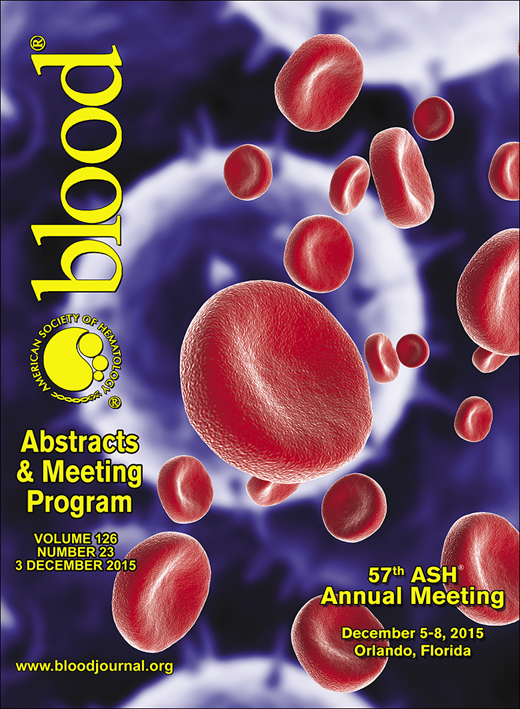Abstract
Background: Heparin-induced thrombocytopenia (HIT) is characterized by the presence of antibodies directed against a complex of Platelet Factor 4 and heparin (PF4/H). These antibodies usually appear within 3 to 6 days after the beginning of heparin therapy, belong predominantly to IgG isotype, and activate platelets, leading to a thrombotic tendency. Murine models suggested that PF4/H complexes are T-cell dependent, but recent data suggested that marginal zone B cells which are stimulated in a T-cell-independent fashion are involved in the production of anti-PF4/H antibodies (PF4/H Ab). In agreement with these data, it was also described a high frequency of PF4/H Ab after liver transplantation, despite a strong immunosuppressive treatment.
Aims: To analyze the incidence of PF4/H Ab in patients with bipulmonary transplantation and to identify a possible consequence of the presence these antibodies on thrombotic events.
Patients & Methods: Citrated blood samples of 55patients [33 cases of cystic fibrosis (60 %), 22 cases of chronic obstructive pulmonary disease (40 %)] with bipulmonary transplantation were analyzed on a first sample before the transplantation (D0) and on a second sample collected within 10 and 17 days after the surgery. (mean level ± 1.sd : 13.6 ± 1.7days). Extracorporeal membrane oxygenation (ECMO) was usually present during the surgery time, but for 4 patients, ECMO was needed up to 10 post-operative days. Patients were treated at least by a triple immunosuppressive regimen (tacrolimus, mycophenolic acid and corticosteroids) and usually by a low molecular weight heparin (enoxaparine or tinzaparine). Antibodies (Ig G, A and M isotypes) against anti-PF4/H complexes were detected using ELISA Asserachrom HPIA (Diagnostica Stago, France). A positive sample is provided, and plasma are considered positive when the absorbance (Abs.) of the plasma tested is above the Abs of the control plasma (CT). We calculated a ratio (Abs of the plasma tested)/(Abs. of the CT), and we considered that result was doubtful (DBT) when the ratio was between 0.8 and 1.2 and positive (POS) when > 1.2. In case of positivity, another assay, which detects only IgG isotype was performed (Asserachrom HPIA - IgG, Diagnostica Stago).
Results:. Three patients (5.5 %) had PF4/H Ab at D0 (2 cases DBT and 1 POS), which were either IgA or IgM. For these 3 cases, the antibodies disappeared during the follow-up, spontaneously in 2 cases and in the last case possibly because of the use of rituximab. PF4/H Ab were observed in 20 patients (36.4%) on the second sample (10 DBT and 10 POS). In 12 cases out of 20, (60%) patients suffered from cystic fibrosis, indicating that there was no association of PF4/H Ab with the lung pathology. PF4/H Ab were detected in 2 patients with prolonged ECMO. Among the 10 POS plasma, 7 were of IgG isotype. Twenty-patients (40 %) experienced a thrombotic event within the 3 months following the transplantation: 6 of them (27.3 %) had PF4/H Ab, a frequency which was not significantly different from the frequency of PF4/H Ab in patients without thrombosis (42.4 %, p = 0.39). Due to a high frequency of pulmonary infections, leukocyte counts were increased at D0 in patients with PF4/H Ab (12.9 ± 7 x109/L) as well as in patients without these antibodies (11.7 ±4.9 x109/L), and remained elevated when the second sample was analyzed (respectively 15.5 ± 9.3 and 16.9 ± 12.5 x109/L). There were no significant differences between patients with or without PF4/H Ab. Platelet counts were not different at D0 between both groups (312 ± 172 and 312 ± 149 x109/L) but during the follow-up, patients with PF4/H Ab had a mean level of platelets (498 ± 194 x109/L) higher than patients without PF4/H Ab (404 ± 255 x109/L), but it did not reach statistical significance ( p = 0.069). No patient developed clinical HIT. Lastly, tacrolimus levels were not significantly different in both group of patients (7.3 ± 2.7 ng/mL in patients with PF4/H Ab versus 6.4 ± 2.6 ng/mL in patients without PF4/H Ab) making insufficient immunosuppression in immunized patients unlikely.
Conclusion: Despite a strong immunosuppressive regimen, a high frequency of PF4/H Ab is observed in patients undergoing lung transplantation, indicating that T cells likely have a limited role in the immune response to PF4/H complexes in humans. From these results, it is not evident that the presence of PF4/H Ab is implicated in physiopathological processes in lung transplantation.
Van Dreden:Diagnostica Stago: Employment.
Author notes
Asterisk with author names denotes non-ASH members.

